Rare butterflies make a comback
Posted on
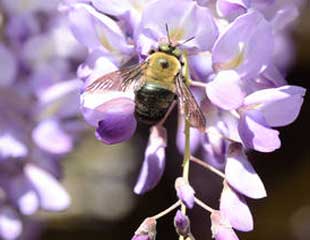
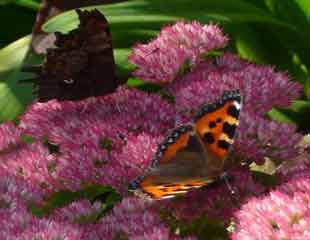
The BBC announced yesterday that rare butterflies are making a come back. Record-breaking temperatures and dry weather in spring last year led to an increase in the numbers of many species of rare butterfly, which is just fantastic news.
There are many plants apart from the infamous Buddleja which are attractive to butterflies, many herbs are magnets for bees and butterflies and Sedums (left) are just great.
I believe that what is in your garden can make a real difference to wildlife. Growing a mix of flowers which produce nectar all the season provides essential food, from Hellebores to Sedums. For ideas on lovely plants that the bees love too visit the wildlife friendly garden
The garden centres at this time of year are featuring Wisteria plants for sale and they too are attractive to bees. This is a good time in the gardening year to buy Wisteria. A common complaint in relation to growing Wisteria is the problems getting them to flower.It follows that a good starting point is to buy a plant at this time of year which has plenty of flower buds on it and so you start with a plant that you know will flower and the art is to persuade it to flower in following years. For more tips on how to make a Wisteria flower click on the link

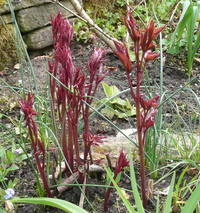 Many garden plants, especially the herbaceous perennials need staking and its a job I often leave until it's almost too late; now is a good time to look plants and consider staking.
Many garden plants, especially the herbaceous perennials need staking and its a job I often leave until it's almost too late; now is a good time to look plants and consider staking.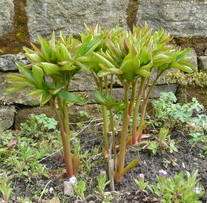 be tempting, when looking at Hemerocallis, with good strong new growth to think it will be alright on its own; but as summer wears on the weight of the flowers and the leaves, will push the plant down which will suffocate anything around it and flatten it out. Peony and
be tempting, when looking at Hemerocallis, with good strong new growth to think it will be alright on its own; but as summer wears on the weight of the flowers and the leaves, will push the plant down which will suffocate anything around it and flatten it out. Peony and 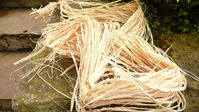 soft, but strong ties, looks attractive and degrades down if necessary. Tie loosely with a figure of 8 knot so that the support and plant can move.
soft, but strong ties, looks attractive and degrades down if necessary. Tie loosely with a figure of 8 knot so that the support and plant can move.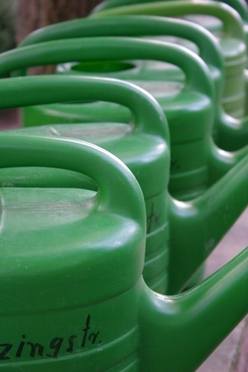 This year's challenge is drought resistant gardening which is sure to become more difficult as the summer progress. We don't know what sort of summer we will be having this year, but it's unlikely to have enough rainfall and so we will need to plan ahead. The veg plot will present some serious challenges as all veg need water to grow and produce good crops. One way to make the best use of the water rescourse is to ensure water gets to the roots which is where the plant most needs it. If you are planting the veg plot during April and May use shredded paper as a mulch in bean and pea trenches; use old water bottles with the bottoms cut off to sink into the ground so that when watering the water can be funnelled down to the roots.
This year's challenge is drought resistant gardening which is sure to become more difficult as the summer progress. We don't know what sort of summer we will be having this year, but it's unlikely to have enough rainfall and so we will need to plan ahead. The veg plot will present some serious challenges as all veg need water to grow and produce good crops. One way to make the best use of the water rescourse is to ensure water gets to the roots which is where the plant most needs it. If you are planting the veg plot during April and May use shredded paper as a mulch in bean and pea trenches; use old water bottles with the bottoms cut off to sink into the ground so that when watering the water can be funnelled down to the roots. 